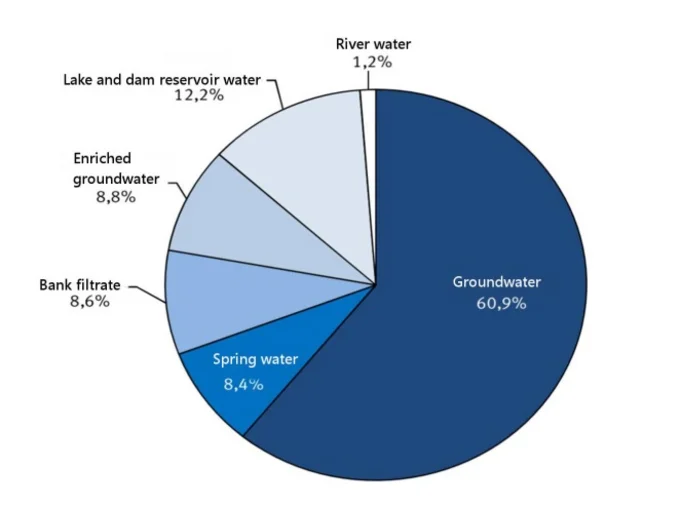Well contruction Basic Knowledge
Basically, drinking water is the main use of water. Just behind the relevance of being the most important food is the use of water for production and maintainance of hygienic standards and finally the importance of water for the energy industry, agriculture and industry.
Summary of the global situation
According to UNICEF Germany [My right to water; 0086/06/2013] and UNESCO [World Water Report March 2014] 780 million people don’t have access to clean drinking water. Also roughly 2.5 billion people – at least a third of the world's population - have no access to clean sanitary facilities. The resulting diseases kill more people (especially children and the elderly) than AIDS, tuberculosis and malaria together.
The demand for clean water will rise steadily near future.
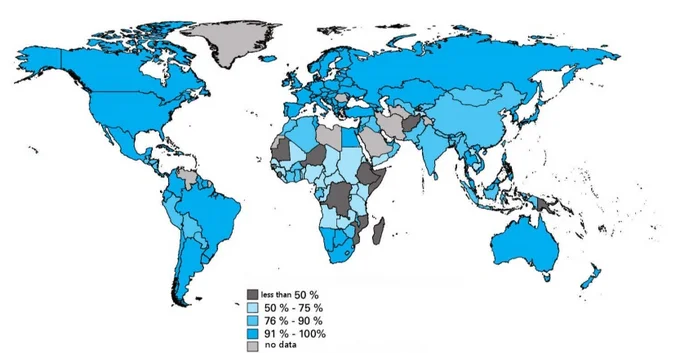
|[Source: UNICEF Germany - My right to water; 0086/06/2013]
Studies estimate that water demand is expected to rise 55% by 2050.
In turn, this figure means that more than 40% of the world's population will live in areas with heavy water stress during the same period. Even today, there are great indications that about 20% of the easily accessible groundwater conductors are used too much. As there is no access to raw water in rivers, lakes or springs all over the world, the creation of wells and the processing of raw water into drinking water plays a decisive role.
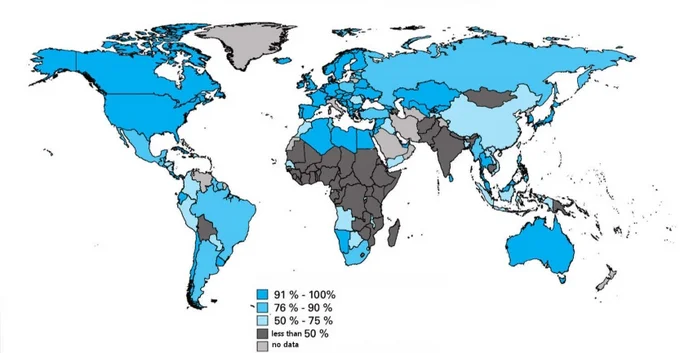
[Source: UNICEF Germany - My right to water; 0086/06/2013]
Both the production of effective working wells as well as the treatment of drinking water from raw water is of existential importance for mankind. A contribution to solving these problems is provided by the rare and cleanly graded filter gravel and filter sand worldwide (like AQUAGRAN®).
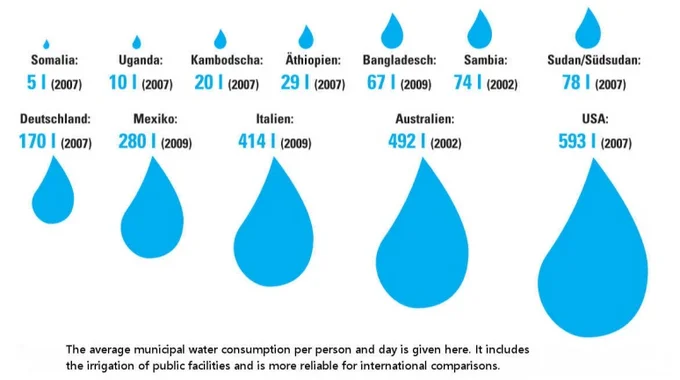
In addition to the drinking and sanitary water question, the world-wide production of energy is also closely linked, as around 15% of global consumption of water is generated in power generation (especially electricity).
Because "energy" is a much higher economic factor than water, this area is currently being discussed much more, but the two resources are closely linked. This interaction could one day lead to a conflict between the needs of both sectors.
UNICEF and the WHO advise at least 20 L per person and day. It is pointed out that there is a demand of up to 100 L per day in many situations. As with many other resources, the use of water is very different, depending on region and industry.
Summary for Europe
A central element of European water policy is the "Community action in the field of water policy" (Directive 2000/60 / EC).
The water resources in the different European countries are very different. The amount of water available in each country results from the sum of surface water (rivers, lakes, streams), groundwater and renewable water (rainfall, difference between inflow and outflow of water).
The largest sources of fresh water in Europe are in the countries Great Britain (173 billion cubic meters), France (186 billion cubic meters), Sweden (186 billion cubic meters) and Germany (188 billion cubic meters). The freshwater resource per inhabitant is different. The area countries like Germany with 3,000 m³ / inhabitant have comparatively low values. Primus is here Croatia with 26.200 m³ per inhabitant. In the states with many inhabitants water treatment is even more important than already. In total, water abstraction in the period from 1990 to 2013 is declining in most EU countries. Causes are "real" savings e.g. by improving household appliances, but the poor economic situation in many countries, and the decline in the production volume, plays a role (industry and energy industry).
Water consumption can be considered sustainable across the EU. Only in some areas has a sub-supply of "regional" own water entered, which however can be compensated by transports. The water in Europe is produced by public water users, private water users with public access as well as by self supply. Interestingly, the public utilities provide the smallest portion of the water, but are perceived the most by puplic. This is probably due to the fact that the population here has direct contact with the water industry.
[Source: Eurostat - Water Statistics - September 2015]
Summary for Germany
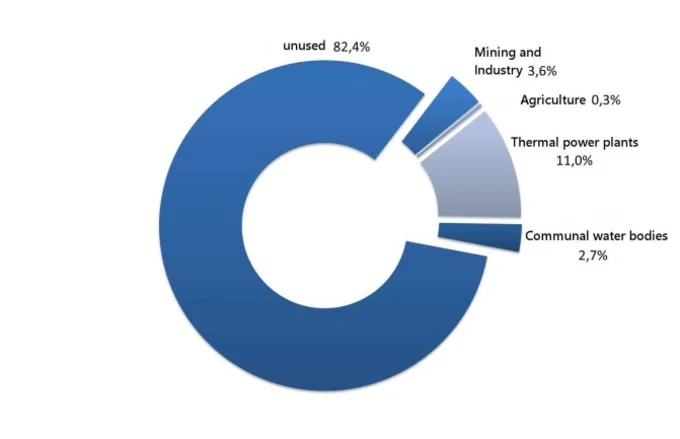
[Source: Federal Statistical Office - Water Management - 2015]
With an available water supply of 188 billion m³, Germany is a water-rich country. In 2010, about 33.1 billion cubic meters of water from groundwater and surface water were extracted from industry and households. This is less than 20% of the potential water supply, that is, over 80% of the available water is currently unused. Transferred to the amount of water taken, this means that the public water supply for drinking water supplies to the German population amounted to about 5.1 billion cubic meters of water.
Basal water is the most important source of drinking water. As the second largest water user, mining and processing industries accounted for around 6.8 billion m³ for industrial purposes.
The biggest demand for water is generated by thermal power plants, which account for about 20.7 m³ of water as cooling water. Agricultural water use is of secondary importance in Germany.
In Germany, around 99.3% of the population in the private sector is reached via public water suppliers (including private contractors). In 2010, the public water supply companies in Germany:
- Water supply companies> 6,000
- Water production: ~ 5.1 billion m³
- Length of the supply network: 530.000 km
- Annual average price for a two-person household: 206 €
- Investments: € 2.2 billion
- Employees: approx. 60,000 people
In 2013, people in Germany need about 121 liters of fresh water per day for example (cooking, washing, showering and cleaning).
Figure 5 shows the % distribution of the origin of the raw water in Germany.
The graphic highlight the enormous importance of the extraction of raw water from groundwater by well construction also for Germany. .
A reasonable well construction on a sufficient scale is not possible without the delivery of exactly classified filter gravel according to DIN 4924 as AQUAGRAN®.
Ein sinnvoller Brunnenbau in ausreichendem Maßstab ist ohne die Lieferung exakt klassierter Filterkiese gemäß DIN 4924 wie AQUAGRAN® nicht möglich.
